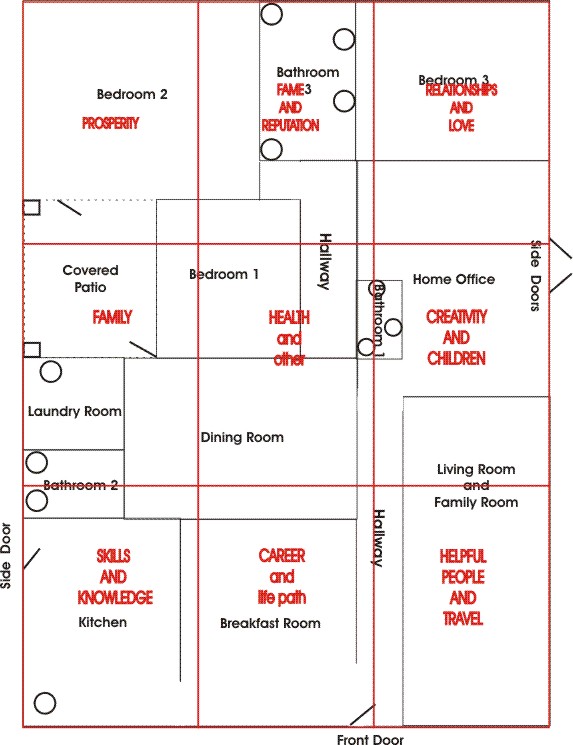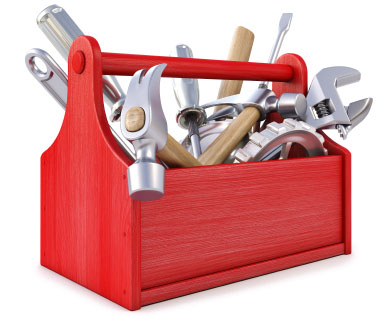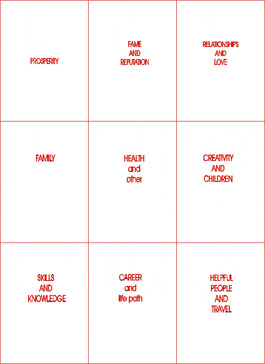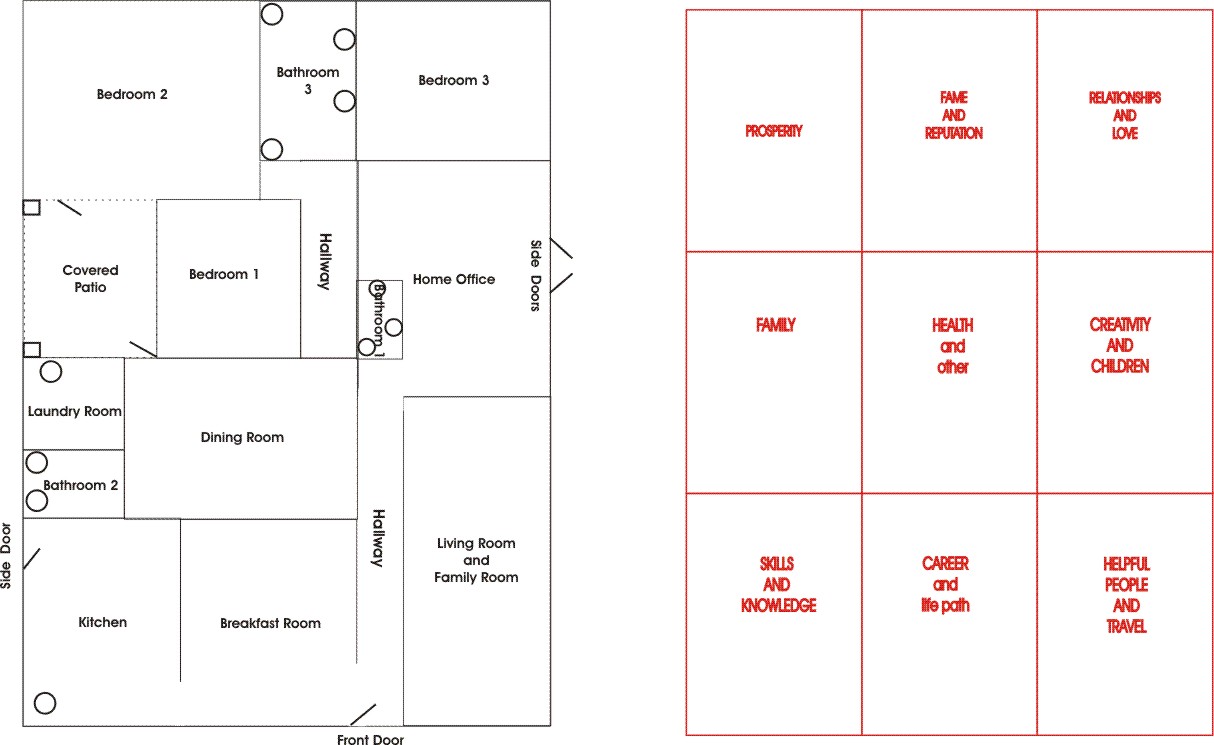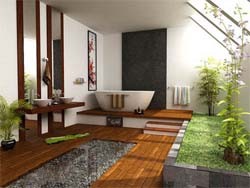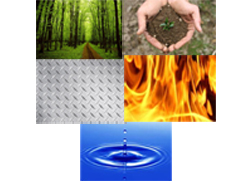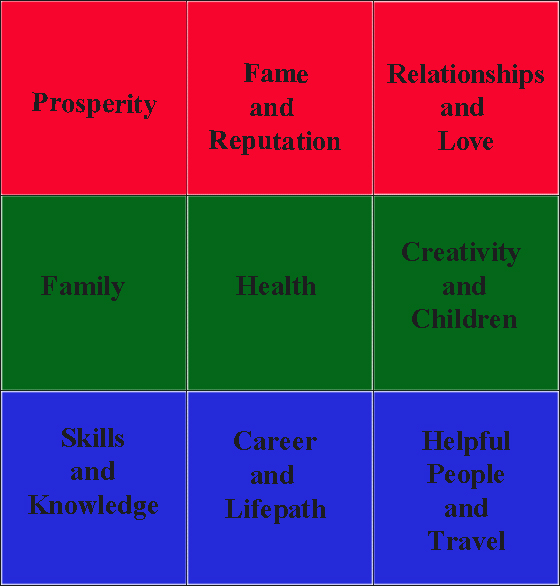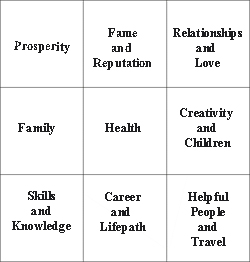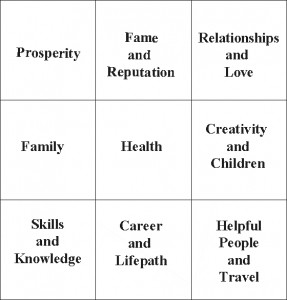Let’s continue with the next 3 guas that I drew up in my sample floor plan for Feng Shui:
The Creativity and Children Gua is located almost completely in the Home Office in the floor plan. The office has a large wooden art object on a large wooden table, the floors are wood and there is a small rattan table with two large wooden chairs. One wall of the room is mirrored and the opposite wall has large mirrored closet doors. There is a large couch, a large wooden armoire and wooden filing cabinet.. There is also an extremely large rose-pink quartz crystal ball in the room. There are also two large french doors on one end of the room and a large window on the other end of the same wall. There is a sheet metal enclosed fireplace in the room. The toilet in the adjacent bathroom is in the gua.
There is an abundance of wood in this gua. There is a lot of water represented by the windows and the mirrors. There is no earth in the room other than the crystal ball. The fireplace represents fire in the room. There is very little metal.
The Health and Other Gu takes up a good portion of the dining room, bedroom 1 and the back hallway. The dining room floor is made of white marble. There is a brick fireplace in the room. A wooden dining table sits in the middle of the room under a small chandelier with plexiglass prisms. One wall of the dining room is painted red. The section of the bedroom in the gua contains a bed on brick flooring. The hallway floor is marble.
There is no metal or water in this gua. The red wall and fireplace represent fire well. The marble floors and the brick floors provide plenty of earth. The dining table and chairs add plenty of wood to the gua since they dominate the room.
The Family Gua encompasses parts of the dining room, kitchen bathroom, bedroom 1, covered patio and all of the laundry room. The laundry room floor is made of Mexican clay tile. There is an electric dryer and washing machine in the room and two sets of wooden cabinets. There are two small windows in the room. The portion of the dining room is bare with marble flooring and has two large glass french doors. The portion of the bedroom is brick flooring with two glass french doors. The covered patio has brick flooring with glass-topped metal furniture.
This gua has lots of water represented by the glass doors and glass table tops. The brick flooring in the bedroom and the patio along add a lot of earth. The electric dryer represents fire. There is no wood present in the gua and very little metal.
Next: As I did with the first 3 guas, I will cure (balance) these 3 guas in my next post.
